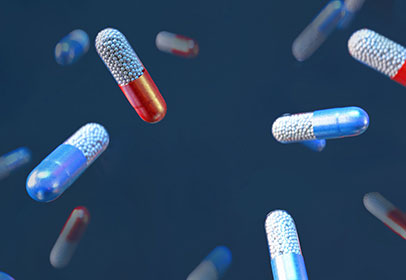Artificial intelligence is poised to help the biopharmaceutical industry fully embrace freeze-drying as a product stabilization technique, according to researchers.
In biopharmaceutical freeze drying—lyophilization—protein drugs are stabilized by removing water and solvents. The process consists of a freezing phase in which the water is crystallized into a solid, a sublimation step that converts this ice into a gas, and desorption, in which the temperature is gradually increased to drive off any remaining liquid.
Freeze-dried biopharmaceuticals are more stable than liquid formulations and less likely to degrade. But despite this, the use of the approach has been limited. Most large molecule drugs are sold as solutions. According to one study, only 34% of the biopharmaceuticals approved by the European Medicines Agency (EMA) between 1995 and 2018 are lyophilized.
In part, this underuse reflects misconceptions about the cost of freeze drying, notes Mahesh More, PhD, from the department of pharmaceutics at the Rajendra Gode College of Pharmacy in Buldhana, India, who says the industry needs to have a longer-term view.
“The cost of freeze drying is high in comparison to the traditional [stabilization] methods—it is around 30 to 60% higher—but it is a cost the drug company can cumulatively recover from the marketed product,” explains More. “Additionally, if companies use freeze-drying then the cost of transportation as well as storage will also be reduced,” he says, pointing out that freeze-dried formulations do not require a cold chain distribution system.
But costs aside, there are challenges associated with freeze-drying, according to More, who examined the approach in a new study.
“The major challenge involved in freeze-drying is the selection of cryo-protectant or lyo-protectant. It should protect the biomolecule from degradation, environmental exposure, as well as improve the solubility, dissolution rate, and bioavailability of the drug,” he continues. “The excipient should act as a capping agent and provide sustained or controlled release. Another major challenge is the selection of the solvent, as traces of solvent can interfere with the solubility characteristics of the drug.”
This is an area in which artificial intelligence and predictive modeling have a potential role to play, according to Moore.
“AI could provide the selection criteria like the type of excipient suitable for formulation, and solvent use during the preparation of the blend,” he says. “Ultimately, by guiding formulation development in this way, AI could be helpful in increasing the utilization of freeze-drying processes in biopharmaceutical manufacturing.”
(Source: GenEngNews)
10 Apr 2024
Generic lomustine to be first product of US-based partnership
Find out more
 CN
CN




